Bulletin N° 820
Subject
:
« We are All
Palestinians » :
Against
the Devaluation of Human Life.
![The image was snapped at a protest against Israel's blockade of Gaza on October 22 [Mustafa Hassona/Anadolu]](images/820_001.jpg)
25 October 2018
Grenoble,
France
Dear
Colleagues and Friends of CEIMSA,
Many
years ago, when living in Southern California at the start of the
counter-revolutionary era of Ronald Reagan, I began research on the Japanese
American internment during the Second World War, I
decided to focus on the uses of social science in these camps and the early 20th-century
theories that informed these “scientific research” projects. It was a period in
US history –after the U.S. defeat in Vietnam – when science was being restored
to the domain of cultural activities, and one of my objectives was to
investigate the pre-scientific
interests of social scientists who lived and worked in these so-called
temporary assembly centers and
long-term concentration camps, that
housed more than 110,000 men, women, and children of Japanese ancestry, between
1942 and 1946. My research took me into critical readings on the limitations
intrinsic in the scientific method, and on the role played by aesthetics and
ethics in the working lives of scientists and their alienated subjects. My book
was published, after many starts and stops, in 1999 under the title of America's
Concentration Camps During World War II, Social Science
and the Japanese American Internment (University Press of the South, 443 pages).
At
the beginning of this research, I encountered Jerry Farber, with whom I had
taught at the University of Paris in the 1970s and who was a tenured faculty
member at San Diego State University. Farber was then finishing his book, A Field
Guide to the Aesthetic Experience (Foreworks
publishers, 270 pages of fine print) that was published in 1982. I purchased a
copy of his book, at the time thinking it might orient me in my own research on
the “scientific” work conducted on Americans of Japanese ancestry living in
concentration camps during WW II. However, I found other books which were more
helpful for my research, and I put
Farber’s book aside for another day.
Recently,
this day arrived, and I confronted Field
Guide like a long lost friend. It was hiding on a dusty shelf in my living
room, between my copy of William Burroughs’ Naked
Lunch and The Dharma Bums, by
Jack Kerouac. Not bad company, I thought.
I
wasn’t disappointed when I rediscovered Jerry Farber’s very personal
description of teaching aesthetics to undergraduate students at San Diego State
University and his remarkably personal accounts of his own encounters with the
arts, beginning at the age of three. The very diversity of his past experiences
certainly makes Farber a one-of-a-kind university professor-cum-public
intellectual, and his commitment and courage to demystify artistic
production/appreciation and to place it in its proper political and economic
context is invaluable.
This
book is richly illustrated with experiences taken from common everyday life,
which he uses to explain concepts in the field of aesthetics. The radical
purpose of this research is stated in the author’s Preface: “One reason . . .
for writing this book is to bring some of our aesthetic assumptions out in the
open where they can be examined and reconsidered. Although I am proposing a
complex and comprehensive aesthetic theory, I’ve taken some pains to make this
theory available to general readers . . . . I hope that this book, by raising
pivotal questions and by challenging common ideas about art, may at the very
least provide the incentive for a little spring cleaning. If this book leaves
some readers more sensitive, more open to the experience of art, it will have
succeeded in a very important way.”(pp. 2-3)
By
examining literature, painting, sculpture, film, dance, opera, and music,
Farber proceeds to critique the standard commoditization of art, which involves
the mystification of the artist and his work, as well as the exclusive
audience/consumers. His theory prioritizes “aesthetic perception” rather than
the work of art being experienced. The difference between “ordinary perception”
and “aesthetic perception” is the “absence of self-concern” in the latter activity.
Between
a newspaper and a good short story, the difference lies in the way we read or
are led to read, not necessarily in the subject matter. With the paper, we
glance around at headlines, looking for what touches our concerns, either
directly or through ego-identification; we read each story just as far as is
dictated by hopes, fears, libido, anger, and so on. Even what we consider ‘mere
curiosity’ often turns out to be an instrument of self-concern . . . . With the
newspaper, our purpose is extractive. With the short story, however, though
similar content may be involved, we lose our restless desire to extract parts
from the whole; the perception becomes an end in itself. Libido, aggression,
and so on may be called into play but we are no longer their agent; we simply
perceive them out there in the story. Occasionally, of course, we may
read a newspaper story aesthetically, particularly if it is very artfully
written. We lose ourselves in it, with its imagery and rhythms; we actually see
it happen.(pp.19-20)
Thus, Farber observes,
“aesthetic consciousness and self consciousness stand at opposite poles; as we
move toward one, we abandon the other. This can be true even, say, in dancing,
where the dancer may be simultaneously perceiver and object. Aesthetic
satisfaction in dancing is not automatic; it comes, finally, when you pour your self into kinesthetic image, into space and time,
shape and motion.”(p.15)
The self from which
we escape in art is not the self that houses our individual past but the self
with an individual claim on the future. . . .
. . .
What I call ‘self-concern’ examines the
present in light of a personally-centered future, or rather of various possible
futures. It is a monitoring, appraising process that ‘looks out for Number
One.’ Ordinarily, we are in business for our selves, each of us continually
protecting this precious self, pursuing goals,
striving. When we notice anything, we notice it in the light of this continual
striving. Ours eyes and ears - our senses - are, ordinarily, working for the
self that strives.
But aesthetic perception is time out. . .
.
Why do we enjoy art and seek it out? Will we
finally be forced to invent some basic drive, like hunger or sex, in order to
explain our satisfaction – some ‘art instinct’?
I don’t think so. Whatsoever else it may
do for us, aesthetic perception always, by its very nature, offers us the
pleasure of a respite. And this kind of satisfaction, as we all know, can be
enormous. Carrying your own weight around, for example, requires an effort of
which you’re not ordinarily aware until it stops; then, after a day on your
feet, bed can be an intense pleasure. Have you ever noticed people
half-standing and half-floating in swimming pool, letting their limbs go slack
and weightless? Watch them, up to their necks, loosely bobbing, with absent,
even blissful looks on their faces. But a far greater burden than the weight of
your own body is the responsibility of your own self. And in both cases the
burden is there, the effort must be made whether you are directly conscious of
it or not.
. . .
[But] it is not merely the absence of
self-concern; it is as we will see, the opportunity to be alive in the freedom
which this absence provides. . . . Naturally, aesthetic release can vary in
degree and scope from one occasion to another, from one moment to the next.
When it is most nearly complete, we seem to merge with what we are perceiving: the sky, the novel, the song; all responsibility
for self seems to have vanished. Of course we value this experience: it’s time
out. On the other hand, it’s easy to see why we can’t simply stay with our
aesthetic experiences forever; the demands of the self are much too pressing to
be set aside for very long. As a matter of fact, it’s worth noting that, even during aesthetic
perception, our sense of self-responsibility is never completely out of action.
If we’re watching a movie and we smell smoke, sooner or later we’ll start to
think about getting out of the theater. Even on these psychological holidays,
there has to be someone, a skeleton staff, on duty – just in case. Furthermore,
it’s not only some stimulus outside the aesthetic frame, like smoke in
the theater, that can set off the alarm. If the movie itself becomes too
personally threatening, we can lose our capacity to respond to it as art.(pp.15-19)
In
chapter 8, which is devoted to a discussion of the perception of “Resonance”
caused by the experience of art, Farber outlines his view of other responses to
art. Again, focusing on perception, rather than on a specific work of art, he
observes:
Reaction,
resonance, and recognition appear to be three primary kinds of response to art.
At any given moment a single one is likely to predominate, though either or
both of the other’s may well be present to some degree (recognition for
instance, can provide a basis for either reaction or resonance, and in the
representational arts it is always on hand).
Our response may be mainly reactive joy
and relief, for example, at a timely rescue in a play. I wouldn’t expect this
kind of reactive emotion to be evoked by absolute music ,
but it’s very common in theater, film and fiction, and it may be present, to a
lesser extent, in dance, opera, painting, sculpture, song, and so on. Or our
response may be more cognitive: recognizing, figuring out, interpreting.
A person can respond in this way, of course, to any form of art whatsoever. The
third kind of response is a predominately resonant one. Some forms of art may
be more exclusively resonant than others, but there is no form where it doesn’t
play a role.
It should be clear how all of this applies
to our experience of an aesthetic image which is actually before us at a given
moment. But with arts that unfold in time – arts like film, dance, music,
and literature – how do we take account of and respond to larger segments in
time, including the entire work as a whole? Here again we can see the same
three primary ways of responding.(p.105)
His
discussion in Chapter 12 on “Art and Society,” develops his theory of
“disinterestedness,” as aesthetic perception that begins with the perceiver and
“disinterested contemplation” instead of in the work. He writes that,
Even though we recognize that certain
individual art works, because of their particular subject matter and political
perspective, may constitute a criticism of society, it’s hard to see how there
could be any such critical element in the very nature of art itself. Once
again: perception in the absence of self-concern would seem to imply
acceptance, not criticism. I accept my back yard when I see it
aesthetically; for me to view it critically is to view it in the light
of self-concern.
Still, there is a possibility, I think, that
art – all art – may provide, not social criticism
necessarily, but a possible basis for such criticism. We need to remember that
art involves more than merely perception in the absence of self-concern. When I
perceive aesthetically, I perceive my own response out there in the
image. When art is working there is no antagonism between what is in here and
what is out there; the art work not only evokes my own subjective response but
accepts it as well. Now, a work of art may be detached from the network of practical
relationships, but that it exists in the objective world is clear. The
painting, the poem, the song are clearly out there. So that, when I perceive my
own subjectivity, my own experiential quality in the work, that very work
constitutes a validation of this subjectivity in the objective world. The art
work demonstrates that our subjectivity exists beyond the individual
self. The art work is, on the experiential level, an ally in the world out
there.
Now consider, by way of contrast, the kind
of relationship which can exist between individual subjectivity and social
institutions (not which necessarily must exist but which can exist). To
the extent that institutions are base solely upon objective existence of
individuals, an antagonism can develop between the institution and the
individual as subject.
In this society particularly, as our
institutions grow more and more powerful and all-embracing, the individual
becomes more and more rationalized in objective institutional terms. The
individual as IBM card is the reigning cliché of our time – and the very truth.
Increasingly, what we are can be punched onto a computer card for the use of
schools, banks, legislators, marketing departments, social scientists, TV
producers, law enforcement agencies. The
card is all they know of us and all they need to know. More and more, what we
actually experience as process – fluid, whole, unfathomably deep – is redefined
into hard-edged categories, sorted out into shallow compartments. And, most
importantly of all, this redefinition is not merely external to us; we tend to
accept it and to see ourselves according to its terms. Every aspect of
subjectivity can be, in the real-estate sense of the word, “developed,”
parceled out for institutional definition and exploitation. Even social misery and rebelliousness are
defined, exploited, recycled by institutions – the ideal goal being a closed
system that consumes its own waste products. Misery feeds the therapeutic
intuitions and the “self-help” industry, and is also channeled by advertising
into consumption. Rebelliousness is merchandised. And sexuality is defined,
processed and packaged until, as they say in the pork business, nothing is left
but the squeal.(pp.182-183)
Chapter
13, begins with a quote by Georg Lukás,
followed by Adolfo Sánchez Vásquez. Both social critics assert that corporate
capitalist society has a negative influence on the aesthetic powers of
subjectivity and consequently on the ethical judgments of communities. Farber
develops these criticisms in light of his own aesthetic experiences.
“The most decisive feature
of capitalist society, then, is that economic life ceased to be a means to
social life: it placed itself at the center, became an end in itself, the goal
of all social activity. The first and most important result was that the life
of society was transformed into a grand exchange relationship; society itself
became a huge market. In the individual life experiences this condition
expresses itself in the commodity form which clothes every product of the
capitalist epoch as well as all the energies of the producers and creators.
Everything ceases to be valuable for itself or by virtue of its inner (e.g. artistic,
ethical) value; a thing has value only as a ware bought and sold on the
market.”
-
Georg Lukás
“Whereas objects establish
relations with human beings, and thus have human significance through their use
values, their exchange values appear as attributes of the objects themselves,
without relationship to human beings. Objects lose their human meaning, their
quality, their relationship to man. The commodity, we might say, is a human
object, but in a dehumanized form; that is no longer appreciated for its use
value, for its relationship to a specific human need.”
-
Adolfo Sánchez Vásquez
Jerry
Farbre acknowledges the alienating effect of market
values of exchange which is pervasive in late capitalist society:
To
understand the full extent to which art has become the kind of commodity that Lukás and Sánchez Vásquez describe, we need to be aware not
merely of the role of the marketplace but also of the role that knowledge has
come to play in our attitude toward works of art. Knowledge though it is not
capital, strictly speaking, is analogous to capital in some ways. In personal or
corporate terms, knowledge is a key resource, often directly translatable into
hard cash. There is, moreover, a marked tendency for knowledge to accumulate where wealth and power are, and to
be allotted on very unequal terms to the rest of society (attempts, for
example, to bring the poor – especially the minority poor – into higher
education are half-hearted and short-lived). If you like, knowledge itself can
be seen as a commodity which is defined by its exchange value and which can be
used to acquire other commodities. This brings us back to art.
Art,
as commodity, can be acquired with money or with accumulated knowledge. After I
started teaching, it took me a while to understand that many students enrolled
in a poetry course were not after the experience of poetry so much as they
wanted to acquire the poems, which would then, in one way or another, increase
each student’s own personal assets. And this acquisition would take place at
the moment when I, a retailer licensed by the State of California, handed over
to them the “real meaning” behind the words. Occasionally in class when I cast
some doubt on my ability to do that very thing, I would sense, in a student’s
response, the feeling of “Ah, cunning devil! They probably save that for their
graduate students.”
. . .
The
dominance of exchange value over use value tends to keep people on the outside
of art works. It emphasizes the value of these works as object rather than as
experience. This is not a superficial misunderstanding, easily remedied by the
application of aesthetic theory. It is very much part of the way of seeing that
is inculcated by a capitalist society. It doesn’t universally prevent aesthetic
experiences, of course, but, in overall social terms, it exerts a steady
counter-aesthetic force, which will affect people in different ways depending
on their own background, the art form involved, and so on.(pp.190-192)
In
the Epilogue of his book, entitled “On Value Judgment,” Farber concludes by
looking at individual differences in response to art.
Let’s
look at some of the ways in which individuals may, quite legitimately, differ
in their aesthetic emphasis. For one thing: it seems clear that we don’t all
seek (or tolerate) the same levels of sensory stimulation. . . .
One person may get the most satisfaction
from art that evokes the greatest breadth of experience, while another may
particularly relish the kind of art that offers great evocative intensity held
in a narrow range. A novel might be expected to cover a wider ranger than a
lyric poem, but it isn’t the size of the work that necessarily makes the
difference. . . .
One person may be drawn to more exclusive
resonant art; another may particularly appreciate
reactive power. One person may enjoy aesthetic experience that is more
cognitive and meditative; another may want to be swept away. One person may
want art that evokes what is ordinarily closest to self-concern; another may
respond better to art that treads on safer ground. Many of us have areas where
self-concern is not easily suspended, fears (or desires) which, when they are
evoked, threaten to break through the aesthetic image. Or we may have
particular obsessions which tend to seek themselves in art just as they
manifest themselves in dreams.
Even assuming that we are all open to the
full range of possible aesthetic satisfactions, still each of us will present
an individual pattern of emphasis, an individual profile that will help to
determine not only which works we prefer but which arts as well.
To what extent are
values a legitimate basis for aesthetic judgment? Someone says, ‘I like
stories that teach tolerance and understanding;’ Another says, ‘I don’t go to
movies that condone sexual permissiveness.’ Still another condemns abstract art
as ‘elitist’ and ‘escapist.’ One the one hand, I would be the first to
discourage someone from establishing his personal values as a sort of
ideological filter between the work of art and his inner self. This kind of
filter can intercept much of what is perceived before it is able to reach those
experiential depths that are the source not only of resonance but of our
ability to respond emphatically as well. Someone doesn’t let himself respond
resonantly to a religious painting ‘because it’s all superstitious nonsense’; he
doesn’t let himself feel what it’s like to be Emma Bovary, ‘because she’s just
a foolish woman.’ Only what is approved gets through, and even that is likely
to have lost some of its evocative power in passage.
On the other hand, we can hardly say that
a person’s values ought to have no effect on aesthetic preference. Authentic
values have their own depth; they’re rooted in the way we see the world, in the
way we feel, in the very structure of our experience. For this reason, even if
we open up to all art as fully as we can, our response is likely to be more
complete and more wholehearted to works that correspond to these deep-rooted
values.(pp.230-231)
The
research by Jerry Farber is based on participant/observer methods over a life
time of teaching and participating in artistic productions. His book is a noble
attempt to share with readers the remarkably deep level at which most of us are
held in bondage, not by an external oppressor but by the system that has
deprived us of contact with our own sensibilities and potentials for human
development. We simply have no time or inclination to become human – we have
become complicit in our stupefying servitude, concerned only with how best to
serve our masters, who despise us for the shortcomings they have fostered
within us, then cynically use against us . . . . The capacity for an authentic
experience of art, free of capitalist values judgments, has political
implications independent of content: it renders bondage unacceptable based on
our personal experiences, not simply on received ideas.
The
22 + items below lend support to the idea that a sea-change is occurring
in the political economy of world capitalism. The high concentration of wealth
in the hands of a small percentage of the world’s population has inevitably led
to regressive behavior in formerly affluent societies, not yet accustomed to
being ruled by an iron fist. We can only hope that the current disorientation
is a temporary condition, and that reason and political determination will
prevail; that a mass-based proactive response to the injustices and
inequalities (not to mention the wholesale capitalist criminality that we try, but fail, to ignore) will materialize and bring with it new social
organizations of communities where self-determination is based on the real
human needs of the class-conscious population and not on the exploitative
interests of the ruling classes and their brain-washed lackeys.
Francis Feeley
Professor emeritus of
American Studies
University Grenoble-Alpes
Director of Research
University of
Paris-Nanterre
Center for the Advanced
Study of American Institutions and Social Movements
The University of
California-San Diego
a.
Black Agenda Report
18 Oct
2018
Why
I'll Be At the Women’s March on the Pentagon This
Weekend

https://blackagendareport.com/why-ill-be-womens-march-pentagon-weekend
Bruce
A. Dixon, BAR managing editor
+
On
fake investigations: From Kavanaugh
to MBS
![Activists dressed as Saudi Crown Prince MBS and President Trump seen during a demonstration to protest the disappearance of Jamal Khashoggi, in Washington, US October 19, 2018 [Leah Millis/Reuters]](images/820_004.jpg)
https://www.aljazeera.com/indepth/opinion/fake-investigations-kavanaugh-mbs-181020095102285.html
by Hamid Dabashi
With
the help of the Trump administration, the Saudi regime is trying to sell us a
brand new fake investigation.
+
Rula Jebreal: My “Secret Interview” with Jamal Khashoggi Before
His Brutal Murder by the Saudis
https://www.democracynow.org/2018/10/23/rula_jebreal_my_secret_interview_with
+
Twitter storm after Khashoggi's
son meets Saudi crown prince
![Salah Khashoggi shakes hands with Crown Prince Mohammed bin Salman after being 'invited' to receive condolences [Courtesy: Saudi Press Agency]](images/820_005.jpg)
Social
media criticizes Saudi condolence photo showing a pained look as Khashoggi's son shakes prince's hand.
===========
b.
Canada
working to resettle group of White Helmets
evacuated from Syria
https://www.presstv.com/Detail/2018/10/20/577519/Canada-Syria-White-Helmets
+
Outing
Amy Goodman & Glenn Greenwald :
Are
‘Democracy Now!’ & ‘The Intercept’ in bed with
the ‘White Helmets’?
See
also: https://www.corbettreport.com/whitehelmets/
+
MIT professor accuses Bellingcat’s
Higgins of enabling war criminals to walk free in Syria

https://www.rt.com/news/441891-bellingcat-higgins-debate-syria/
(VIDEO)
===========
c.
On Migrants in the EU: the West is Ruled by Carelessness
http://en.cyplive.com/ru/news/pol-kreyg-roberts-o-migrantah-v-es-bezzabotnost-pravit-zapadom.html
According
to the American political scientist Paul Craig Roberts, carelessness European
governments, as well as Washington's militarism, have led to an influx of a
huge number of migrants in the European countries.
Migration
in Europe people of the Middle East and North Africa is the result of the
hegemonic policy of the USA and Israel, which also caused the death of large
numbers of civilians, he said. Roberts notes that the flow of migrants to
Europe so great that European governments to shift the
responsibility to each other and are constantly in conflict with each other
over who and how many refugees should take. "European governments and
their careless people are responsible for the problems with immigrants. Recent
14 years, Europe has supported the aggressive militarism of Washington, which
has destroyed the lives of millions of innocent people. The destruction of
entire countries, such as Iraq, Libya, Afghanistan, and now Syria and Yemen ,
plus everything continued killings of Pakistani citizens with the participation
of corrupt and treacherous government of Pakistan gave rise to the refugee
problem, which marazmatik Europeans had set
ourselves, "-
+
Paul Craig Roberts Speaks
http://www.pravdareport.com/opinion/columnists/03-09-2018/141521-paul_craig_roberts-0/
+
Why
the “Two State Solution” is Apartheid

http://www.informationclearinghouse.info/50488.htm
by Craig Murray
I
expect you are all familiar with the maps showing the radical shrinking of
Palestinian land over 70 years due to the expansion of colonial Israeli
settlement. Startling and appalling, yes, but to me they bring back strong
memories of other maps, in a precisely analogous situation, which goes to the
heart of why Israel is an apartheid state.
The
original apartheid state of South Africa created “homelands”, known
colloquially as “bantustans”, and proposed that, as
the apotheosis of apartheid, these “homelands” would become independent states
and house the majority black population of the country in fenced-off areas
which had been too arid, rocky or commercial mineral free to attract
significant white settlement over three centuries of theft. South Africa
actually did recognise some of these as Independent
states, while the rest were supposed to be on a course to recognition.
The
maps really do bring out the startling similarity between these two attempts to
formalise the dispossession of the original people.
Thankfully, even though the “Homelands solution” had its supporters including
Thatcher, it never achieved support beyond what was then an extreme right wing
view, and none of the “independent states” ever achieved international
recognition.
I
worked in the FCO as the South Africa (Political) desk officer from 1984-6, and
seeing off right wing Tory lobbying to adopt the Homelands policy was a major
problem. It is simply symptomatic of the extraordinary right wing shift in
western politics over the intervening three decades, that a “Bantustan”
solution for Palestine, laughably called a “two state solution”, is now the
accepted wisdom of the political and media class.
===========
d.
Norwegian
Peace Activists Gather to Say 'No' to NATO War Games
https://sputniknews.com/europe/201810201069064611-norway-nato-war-games-protest/
Denis
Bolotsky
Peace
activists are holding rallies in several Norwegian cities to protest against
NATO's "Trident Juncture" maneuvers. Dozens of people gathered in the
center of Trondheim on Saturday to voice their concerns over the nuclear arms
race and further militarization of the country.
On
Saturdays the streets of Trondheim are crowded, but this time it's
not only because of the shoppers and those who attended the open day
at Our Lady's Church. Right next to the church, a crowd with red
flags and anti-war banners is singing songs about the arms race and
nuclear disarmament.
===========
e.
'Here Are Your Enemies'

http://www.informationclearinghouse.info/50430.htm
Saudi
crown prince bragged that Jared Kushner gave him CIA intelligence about other
Saudis, days before 'corruption crackdown'
which led to torture and death
===========
f.
Trump’s
Alliance with Body-Choppers, Death Squads and Child Killers: Saudi Arabia,
Brazil and Israel

http://www.informationclearinghouse.info/50463.htm
by Prof. James Petras
In recent weeks the White House has
embraced the contemporary version of the world’s most murderous regimes. President Trump has embraced the Saudi Arabian “Prince of Death” Mohammad bin Salman
who has graduated from chopping hands and heads in public plazas to
dismembering bodies in overseas consulates – the case of Jamal Khashoggi.
The
White House warmly greeted the electoral success of Brazilian Presidential
candidate Jair Bolsonaro, ardent champion of torturers,
military dictators, death squads and free marketers.
President
Trump grovels, grunts and glories before Israel, as his spiritual guide Benjamin Netanyahu celebrates the Sabbath with the
weekly murders and maiming of hundreds of unarmed Palestinians, especially
youngsters.
These
are President Trump’s ‘natural allies’. They share his values and interests
while each retains their particular method of disposing of the cadavers of
adversaries and dissenters.
We
will proceed to discuss the larger political-economic context in which the trio of monsters operate. We will analyze the benefits and
advantages which lead President Trump to ignore and even praise, actions which
violate America’s democratic values and sensibilities.
In
conclusion, we will examine the consequences and risks which result from
Trump’s embrace of the trio.
+
“Reminiscent of South Africa’s Grand Apartheid”:
Israeli Human Rights Group Slams Israel at U.N.
https://www.democracynow.org/2018/10/22/reminiscent_of_south_africas_grand_apartheid
===========
g.
|
|
|
+
Israel’s 50-Year Time Bomb
https://consortiumnews.com/2018/10/16/israels-50-year-time-bomb/
by Dan Steinbock
+
'Iconic' image of Palestinian protester in Gaza goes
viral
https://www.aljazeera.com/news/2018/10/image-palestinian-protester-gaza-viral-181024113924724.html
===========
h.
Lockheed
and Loaded: How the Maker of Junk Fighters Like the F-22
and F-35 Came to Have Full-Spectrum
Dominance Over the Defense Industry

by
Jeffrey
St. Clair
Lockheed-Martin is headquartered in the Bethesda, Maryland.
No, the defense titan doesn’t have a bomb-making factory in this toney Beltway suburb. But as the nation’s top weapons
contractor, it migrated to DC from southern California because that’s where the
money is. And Lockheed rakes it in from the federal treasury at the rate of $65
million every single day of the year.
From nuclear missiles to fighter planes, software code to
spy satellites, the Patriot missile to Star Wars, Lockheed has come to dominate
the weapons market in a way that the Standard Oil Company used to hold sway
over the nation’s petroleum supplies. And it all happened with the help of the
federal government, which steered lucrative no bid contracts Lockheed’s way,
enacted tax breaks that encouraged Lockheed’s merger and acquisition frenzy in
the 1980s and 1990s and turned a blind eye to the company’s criminal rap sheet,
ripe with indiscretions ranging from bribery to contract fraud.
===========
i.
Immigration:
Western Wars and Imperial Exploitation Uproot Millions

by Prof. James Petras
“Immigration”
has become the dominant issue dividing Europe and the US, yet the most
important matter which is driving millions to emigrate is overlooked –
wars. In this paper we will discuss the reasons behind the massification
of immigration, focusing on several issues, namely (1) imperial wars (2)
multi-national corporate expansion (3) the decline of the anti-war movements in
the US and Western Europe (4) the weakness of the trade union and solidarity
movements.
We
will proceed by identifying the major countries affected by US and EU wars
leading to massive immigration, and then turn to the western powers forcing
refugees to ‘follow’ the flows of profits.
Imperial
Wars and Mass Immigration
The
US invasions and wars in Afghanistan and Iraq uprooted several million people,
destroying their lives, families, livelihood, housing and communities and
undermining their security.
===========
j.
The
Dark Story Behind Global Warming aka Climate Change
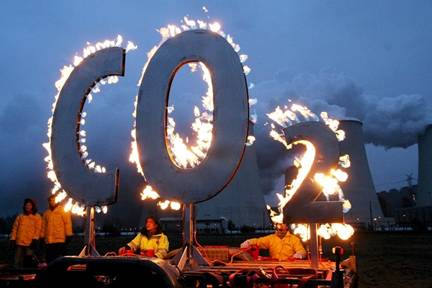
https://journal-neo.org/2018/10/16/the-dark-story-behind-global-warming-aka-climate-change/
by F. William Engdahl
The recent UN
global warming conference under auspices of the deceptively-named International
Panel on Climate Change (IPCC) concluded its meeting in South Korea discussing
how to drastically limit global temperature rise. Mainstream media is
predictably retailing various panic scenarios “predicting” catastrophic climate
change because of man-made emissions of Greenhouse Gases, especially CO2, if
drastic changes in our lifestyle are not urgently undertaken. There is only one
thing wrong with all that. It’s based on fake science and corrupted climate
modelers who have reaped by now billions in government research grants to
buttress the arguments for radical change in our standard of living. We might
casually ask “What’s the point?” The answer is not positive.
+
Trump administration asks Supreme Court to
stop teenagers' climate lawsuit

https://phys.org/news/2018-10-trump-administration-supreme-court-teenagers.html
===========
k.
Climate
Crisis is Upon Us
https://www.counterpunch.org/2018/10/15/climate-crisis-is-upon-us/
by
Rob
Urie
One
of the more useful allusions hidden in plain sight in the recent IPCC / UN report on climate crisis is the distinction
between the pre-industrial and industrial ages that defines the era of climate
crisis. Industrial capitalism, a/k/a capitalism, is the cause of climate
crisis. Plenty of pseudo-scientific rubbish about human caused and Anthropocene can be found in the report’s text. But
industry— the integration of science and technology in capitalist production,
is identified as the cause. No longer are goat herders in Turkmenistan as
responsible as the executives of Exxon-Mobil for the unfolding debacle.
The
report is striking in its urgency. Feedback loops and tipping points contradict
any straight-line assurances of an orderly and knowable path forward. Behind
pages of stark calculations can be found Gaia, the unknowable relations of
Mother Earth that make a mockery of scientific certainty beyond the
understanding that the environment of the planet is being destroyed and needs
to be fixed. Missing is any semblance of a political program to move resolution
forward. But also missing is the usual subtext of technocrats meeting in swank
hotels to eat four-star meals, swap resumes and network. The stakes are now
apparently too high.
Identification
of the industrial age— capitalism, as the cause of climate crisis brings with
it a host of related revelations. Capitalist wealth becomes a crude measure of
its reciprocal in environmental devastation. The relation of wealth to
political power makes timely and / or peaceful resolution improbable.
Capitalist accumulation will hereafter be a measure of informed socio-pathology.
The writing is on the wall. The American political ‘choice’ between the wealthy
or their technocratic servants is a formula for environmental annihilation. The
system crisis is a metaphor for the political crisis that makes resolution so
intractable.
+
Trump
Administration Agency Predicts 7 Degree F
Rise
in Global Temperatures by 2100

http://www.informationclearinghouse.info/50439.htm
by Kaleigh
Rogers
Oh, and the report suggests there’s no
point doing anything to stop it.
Hidden in a
largely overlooked draft report from the National Highway Traffic
Safety Administration are some startling figures: the Trump
administration believes there will be a 7 degree Fahrenheit rise in average
global temperatures by 2100, and the report suggest we not even bother trying
to stop it.
“The
amazing thing they’re saying is human activities are
going to lead to this rise of carbon dioxide that is disastrous for the
environment and society. And then they’re saying they’re not going to do
anything about it,” Michael MacCracken, who served as
a senior scientist at the U.S. Global Change Research Program from 1993 to
2002, told the Washington
Post.
Deep
in the dog days of summer this year, the National Highway Traffic Safety
Administration released a 500-page report on the environmental
impact of fuel economy standards. Perhaps unsurprisingly, this
document was not widely-read. But on Friday, the Washington Post reported the fact that the paper assumes that if
current practices are unchanged, the planet will warm a catastrophic 7 degrees
F, or about 4 degrees Celsius.
===========
l.
How
We Roasted Donald Duck, Disney’s Agent of Imperialism

https://www.counterpunch.org/2018/10/12/how-we-roasted-donald-duck-disneys-agent-of-imperialism/
by
Ariel
Dorfman
I
should not have been entirely surprised when I saw How to
Read Donald Duck, a book I had written with the Belgian sociologist
Armand Mattelart, being burned on TV by Chilean
soldiers. It was mid-September 1973 and a military coup had just toppled Salvador
Allende, the country’s president,
terminating his remarkable experiment of building socialism through peaceful
means.
I
was in a safe house when I witnessed my book – along with hundreds of other
subversive volumes – being consigned to the inquisitorial pyre. One of the
reasons I had gone into hiding, besides my fervent participation in the revolutionary
government that had just been overthrown, was the hatred the Donald Duck book
had elicited among the new authorities of Chile and
their rightwing civilian accomplices.
We
had received death threats, an irate woman had tried to run me over and neighbours – accompanied by their children – had stoned the
house where my wife, Angélica, and I lived in
Santiago, shouting: “Long live Donald Duck!” It was later discovered that the
5,000 copies of the third printing of the book had been taken from a warehouse
by the Chilean navy and cast into the bay of Valparaíso.
What
had we done to incur such enmity?
Armand
and I had denounced Walt Disney as an agent of American cultural imperialism,
incarnated in the life, adventures and misdeeds of Donald Duck, that innocuous
icon, then one of the most popular characters in the world. Probing hundreds of
Disney comic strips – sold by the million on newsstands in Chile and countless
other lands – we had tried to reveal the ideological messages that underlay
those supposedly innocent, supposedly apolitical stories.
We
wanted Chilean readers to realise they were being fed
values that were inimical to a revolution that sought to unshackle them from
centuries-old exploitation: competition rather than solidarity, prejudice
rather than critical thinking, obedience rather than rebellion, paternalism
rather than resistance, money rather than compassion as the standard of worth.
We
wanted Chileans to realise they were being fed values
inimical to a revolution … to understand how previous rulers had presented
subjugation as normal, natural and benign
It
was not enough, we felt, to change the economic and social structures that
benefited a rich minority and their international corporate allies. It was also
imperative to understand how the previous rulers of our land had presented this
subjugation as normal, natural and benign; how they had been covertly selling
us an American model of success and consumer affluence as the false solution to
poverty and misdevelopment.
Just
as copper and other resources usurped by foreign hands needed to be recovered
for the nation, so too did our dreams and desires. We had to take back control,
forge a new identity, devise new forms of
entertainment. Our book was meant to contest the authoritarian plots imported
from the US, to open spaces for stories of our own making.
+
Brazil In
Danger: Three Time Bombs
http://www.informationclearinghouse.info/50441.htm
by
Boaventura de Sousa Santos
Brazilian democracy is
on the brink of the abyss. The institutional coup that was set in motion with
President Dilma Rousseff’s
impeachment and led to the unjust imprisonment of former President Lula da Silva is all but complete. The consummation of the coup
has acquired a meaning that is quite different from what was initially intended
by many of the political and social forces that promoted it or just would not
disagree with it. Some of these forces either acted or reacted in the honest
belief that the coup was aimed at regenerating Brazilian democracy by fighting
corruption, while others saw it was a way of neutralizing the elevation of the
popular classes to a standard of living that sooner or later was to be a threat
not only to the elites but also to the middle classes (among whom there were
many who were the product of the redistributive policies against which they
were now turning). Of course none of the two groups spoke of a coup and both
believed that democracy was there to stay. They were unaware of the existence
of three time bombs which, although built at very different times, could
explode all at once. Were that to happen, democracy would show its frailty and
possibly prove unable to survive.
Built in colonial times and during the independence process, the first time
bomb was detonated in a particularly brutal way on several occasions throughout
Brazil’s modern history, but was never effectively defused. It is the very DNA
of a society divided into masters and servants, oligarchic elites and the
“ignorant” people, institutional normalcy and extra-institutional violence – in
a word, an extremely unequal society in which socio-economic inequality has
never been extricated from racial and sexual prejudice. Despite all their
mistakes and defects, the PT (Workers’ Party) governments were unparalleled in
the manner in which they contributed to defuse this bomb, creating policies of
social redistribution and fighting racial and sexual discrimination in ways
that were unprecedented in Brazilian history. For the defusing to be effective,
these policies would have to be sustainable and held in place for several
generations, thus keeping the memory of extreme inequality and crude
discrimination from being susceptible to political reactivation by hostile
forces. Since this has not been the case, those policies have had other effects
but failed to defuse the time bomb. On the contrary, they provoked those who
had the power to activate it into doing so as soon as they possibly could,
before it was too late and the threats posed to the elites and the middle
classes became irreversible. The overwhelming demonization of the PT by the
oligopolistic media, especially from 2013 onwards, exposed this desperate wish
to stop the threat.
===========
m.
Billionaire-Funded
Fascism Is Rising in America

https://www.truthdig.com/articles/thom-hartmann-billionaire-funded-fascism-is-rising-in-america/
by Thom Hartmann
+
The Rats Revolt
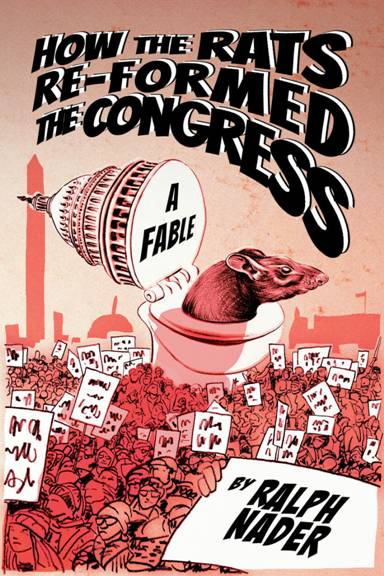
https://www.truthdig.com/articles/the-rats-revolt/
by Ralph Nader
+
Henry Kissinger
Heckled At NYU, Told To "Rot In Hell"
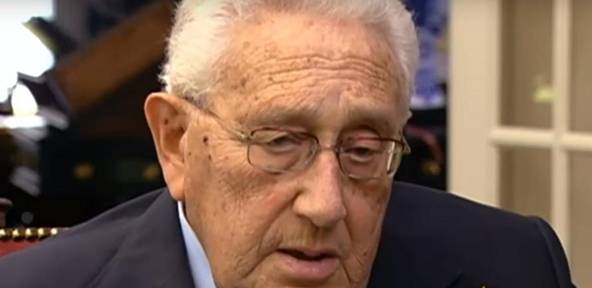
https://www.zerohedge.com/news/2018-10-18/henry-kissinger-heckled-nyu-told-rot-hell
by Tyler Durden
+
A Disney Heiress Reveals the 1 Percent's Worst-Kept
Secret

Abigail Disney. (Womens eNews / Flickr Creative Commons)
by Iliana Novick
When
the 2017 Tax Cuts and Jobs Act passed, Republicans celebrated with beers in the
White House Rose Garden. President Trump promised help for financially
struggling Americans, saying, “Congress has reached an agreement on tax
legislation that will deliver more jobs, higher wages and massive tax relief
for American families and American companies.”
But
as a new, remarkably honest video by Abigail
Disney, filmmaker, activist and heiress to the Walt Disney fortune shows, it’s
not the American family struggling to put food on the table and pay rent that
will benefit from these tax cuts.
“Greetings
from the 1%,” Disney begins the video. “[W]e in the 1% got a great Christmas
present last year,” she says, “I don’t know if you remember—it was called a
very big tax break.”
“I
didn’t need it,” Disney continues, “but the Republicans gave it to me anyway.
And I hear [that] if the Republicans do well in these midterms, they want to
give me another one; an even bigger one, in fact.”
+
Protesters
Target US Senator McConnell
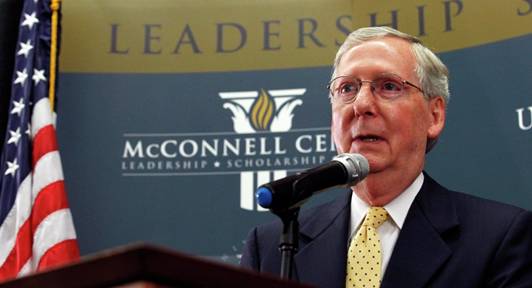
https://sputniknews.com/viral/201810211069071158-people-defend-republican-senate-leader-diner/
(WATCH)
“Oh
yeah, why don’t you get out of here?
Why don’t you leave our entire country,” the angry man told the couple.
After
Chao attempted to argue with the man, McConnell simply ignored him.
Meanwhile, other customers began shoo-ing gestures
and told the yelling man to leave the couple alone.
The
woman who recorded the incident told TMZ that the angry man hit McConnell’s
table with his fists and threw food, after accusing McConnell
of planning to “come for Social Security,” cited by The Hill.
===========
n.
Marxism
101: How Capitalism is Killing Itself with Dr. Richard
Wolff
https://www.youtube.com/watch?v=6P97r9Ci5Kg&feature=youtu.be
Despite
a concerted effort by the U.S. Empire to snuff out the ideology, a 2016 poll
found young Americans have a much more favorable view of socialism than
capitalism. Though he died 133 years ago, the analysis put forward by one of
the world’s most influential thinkers, Karl Marx, remains extremely relevant
today. The Empire’s recent rigged presidential election has been disrupted by
the support of an avowed socialist, Bernie Sanders, by millions of voters. To
find out why Marx’s popularity has stood the test of time, Abby Martin
interviews renowned Marxist economist Richard Wolff, Professor Emeritus of
Economics at UMass - Amherst, and visiting professor at the New School in New
York. Prof. Wolff gives an introduction suited for both beginners and seasoned
Marxists, with comprehensive explanations of key tenets of Marxism including
dialectical and historical materialism, surplus value, crises of
overproduction, capitalism's internal contradictions, and more.
+
Who Really Runs The World? - Russell Brand & Yuval
Noah Harari
https://www.youtube.com/watch?v=ta4U8G03q98&feature=youtu.be
A
clip from the new Under The Skin podcast episode with Yuval Noah Harari discussing power, AI and our future and identity as
human beings.
+
Black
Agenda Radio
Week of October
15, 2018
Black America Must Say No to US Imperialism
The
director of the Black Alliance for Peace, Ajamu
Baraka, said it is vitally important to give voice to Black Americans’
historical opposition to US military adventures abroad. A Black peace movement
is necessary, “so we can determine our friends from our enemies, so we don’t
allow our young people to be marched off to fight for the interests of the 1%
against other poor and oppressed people around the world,” said Baraka, the Green
Party 2016 vice presidential candidate and an editor and columnist for Black
Agenda Report.
===========
o.
CEOs
Should Have Been Held Responsible for the 2008 Financial Crisis — Why Are They
Still Heroes?

The contemporary adulation and
admiration of CEOs raises the question of what enabled their continued idolisation.
+
Facebook is Not Your Friend
https://blackagendareport.com/facebook-not-your-friend
Facebook has become The
Great Censor, ready to pull the pages of dissenters that seek to “stir up
political debate” in ways that threaten the legitimacy of corporate rule.
“Facebook is indispensable to maintaining the global
corporate monopoly on truth -- as is Google.”
Facebook has declared war on political
dissent. In a rash of purges last week, the behemoth corporation banned 30
pages, with a total of 22 million fans, on the grounds that the accounts were
“created to stir up political debate in the US, the Middle East, Russia and the
UK.” At the top of the list were the anti-police lawlessness pages Cop Block ,
Filming Cops , The Free
Thought Project and Police the Police, with a combined audience of 8.1
million. The other banned pages range across the non-establishment spectrum ,
from the reactionary Right Wing News, to Punk Rock Libertarians and the
pro-marijuana page, Hemp.
These
pages are “inauthentic,” Facebook claims ,
because they “use sensational political content” to “drive traffic to their
websites.” Of course, the New York Times , the Washington
Post and virtually every other organ of
corporate media also maintain Facebook pages that are
designed to “drive traffic to their websites.” The daily content of these imperial
propagandists is filled with “sensational” stories that are designed to inflame
the public, laying the groundwork for endless wars -- most often on evidence
that turns out to be fictitious. Yet Facebook has
enlisted as “fact-checkers” the same corporate media that vouched for the
presence of weapons of mass destruction in Iraq, spread lies about
Viagra-fueled mass rape by Muammar Gaddafi’s soldiers in Libya, and continue to
mask the U.S. alliance with al Qaida fighters in Syria. These same corporate “news”
organs have treated allegations of Russian collusion with Trump during the 2016
elections as fact -- without a shred of evidence -- in order to whip up a new
Cold War.
“At
the top of the list were the anti-police lawlessness
pages Cop Block, Filming Cops, The Free Thought Project and Police the Police.”
Polls
have long showed that the U.S. public -- of all racial and political shades --
no longer believes the corporate media version of reality, which almost
routinely turns out to be false, and which Black people have always known to be
false. This crisis of legitimacy for the ruling class and its media organs
became acute in 2016, when the wildly unpredictable Donald Trump seemed to
threaten the gentlemen’s agreement between the two corporate parties on regime
change warfare and so-called free trade. Barely a week after Trump’s surprise
victory at the polls, outgoing President Barack Obama, on a visit with German
Chancellor Angela Merkel, called for the imposition of a standardized version
of truth.
===========
p.
Naomi Klein: We've Entered a Frightening New Era of
Capitalism
https://www.truthdig.com/articles/naomi-klein-weve-entered-a-frightening-new-era-of-capitalism/
+
Trump threatens to build up US nuclear arsenal until
Russia, China 'come to their senses'
US President Donald Trump threatned
Russia and China that Washington intends to build up its nuclear arsenal until
“people come to their senses.”
The president said his words were directed towards Moscow
and Beijing, as he prepared to unilaterally leave the Intermediate Nuclear
Forces in Europe (INF) treaty. The US president implied China should be
part of any new nuclear arms control treaty.
“Russia has not
adhered to the agreement,” neither in form or
in spirit, Trump told reporters outside the White House on Monday, before
departing for a campaign rally in Texas.
+
It
Is Like A Western Movie: A Showdown Is In The Making

http://www.informationclearinghouse.info/50490.htm
by Paul Craig Roberts
It
has taken the US military/security complex 31 years to get rid of President
Reagan’s last nuclear disarmament achievement—the INF Treaty that President
Reagan and Soviet President Gorbachev achieved in 1987.
The
Intermediate Range Nuclear Forces Treaty was ratified by the US Senate on May
27, 1988 and became effective a few days later on June 1. Behind the scenes, I
had some role in this, and as I remember what the treaty achieved was to make
Europe safe from nuclear attack by Soviet short and intermediate range
missiles, and to make the Soviet Union safe from US attack from short and
intermediate range US nuclear missiles in Europe. By restricting nuclear
weapons to ICBMs, which allowed some warning time, thus guaranteeing
retaliation and non-use of nucular weapons, the INF
Treaty was regarded as reducing the risk of an American first-strike on Russia
and a Russian first-strike on Europe, strikes that could be delivered by
low-flying cruise missiles with next to zero warning time.
===========
q.
Dissident Saudi Academic Madawi
Al-Rasheed on Khashoggi’s
Disappearance, U.S.-Saudi Relations & More
https://www.democracynow.org/2018/10/19/dissident_saudi_academic_madawi_al_rasheed
+
Khashoggi murder a ‘monstrosity’, no arms exports to Riyadh
until incident cleared up – Merkel

+
New twist in Khashoggi
mystery: MBS spoke to journalist moments before his death, report claims
https://www.rt.com/news/441915-mbs-jamal-khashoggi-call/
Khashoggi, a critic of the Saudi royal
family, was last seen when he entered the Saudi consulate in Istanbul on October
2 to obtain documents for his forthcoming marriage. Turkish President Recep Tayyip Erdogan
said on Sunday that Ankara would reveal the full truth surrounding his death on
Tuesday, after his country previously stated that the journalist was killed by
a Saudi assassination squad.
Riyadh's
initial claim of Khashoggi dying in a fistfight has
been met with criticism, including from US senators who believe Saudi Crown Prince Mohammad
bin Salman ordered the journalist to be killed.
Meanwhile,
an unnamed Turkish official backed up the assassination squad
claim earlier on Monday, telling CNN that one of the
members of the 15-man squad was a man who looked like Khashoggi and left the consulate wearing his clothes
moments after the killing.
Although
the journalist's death has prompted a wave of global backlash against Riyadh,
the Gulf kingdom has said that its relationship with the US can weather the
incident, and insists the killing won't trigger a
repeat of the 1973 oil embargo.
===========
r.
Swelling Migrant Caravan Resumes March to U.S.
https://www.truthdig.com/articles/swelling-migrant-caravan-resumes-march-to-u-s/
by Mark Stevenson
As they
passed through Mexican villages on the outskirts of Ciudad Hidalgo, they drew
applause, cheers and donations of food and clothing from Mexicans.
CIUDAD
HIDALGO, Mexico—A growing throng of Central American
migrants resumed their advance toward the U.S. border in southern Mexico on
Sunday, overwhelming Mexican government attempts to stop them at the border.
Their
numbers swelled to about 5,000 overnight and at first light they set out
walking toward the Mexican town of Tapachula, 10
abreast in a line stretching approximately a mile (1.5 kilometers).
Several
hundred more already had applied for refugee status in Mexico and an estimated
1,500 were still on the Guatemalan side of the Suchiate
River, hoping to enter legally.
It
was not immediately clear where the additional travelers had materialized from
since about 2,000 had been gathered on the Mexican side Saturday night. They
seemed likely to be people who had been waiting in the Guatemalan town of Tecun Uman and who decided to
cross during the night.
They
marched on through Mexico like a ragtag army of the poor, shouting triumphantly
slogans like “Si se pudo!” or “Yes, we could!”
===========
s.
Who’s Behind ICE? How Amazon, Palantir,
Microsoft & Tech Giants
Are Powering Trump’s Deportations
https://www.democracynow.org/2018/10/24/whos_behind_ice_how_amazon_palantir
===========
t.
Inside Nikki Haley's Shocking Speech to Secretive Far-Right
Group

https://www.youtube.com/watch?v=t1KuAnc8CCw&feature=youtu.be
Just
days before she resigned as UN Ambassador, Nikki Haley delivered a private
speech to the Council for National Policy, a secretive group of influential
right-wing figures. Journalist Max Blumenthal obtained exclusive access and
reveals shocking details -- including Haley's admission that she threatened the
Chinese ambassador with a US invasion of North Korea.
===========
u.
The
Story of the Armenian Legion: a Dark Tale of Anger and Revenge
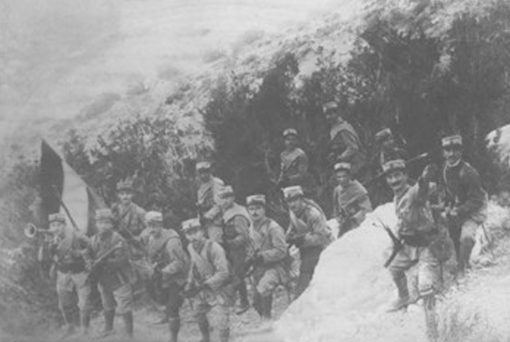
by
Robert
Fisk
===========
v.
Saudi Arabia Financed the Killers of American Troops I
Commanded
https://www.truthdig.com/articles/what-keeps-washington-indefinitely-in-bed-with-riyadh/

Donald
Trump with Saudi Crown Prince Mohammed bin Salman in
the White House in March. (Shealah Craighead / White
House)
https://www.truthdig.com/articles/what-keeps-washington-indefinitely-in-bed-with-riyadh/
by Maj. Danny Sjursen
(U.S.
Army officer and former history instructor at West Point, who served tours with
reconnaissance units in Iraq and Afghanistan)
It’s
time to ask an uncomfortable question: What exactly is the U.S. getting out of
its partnership with Saudi Arabia? The answer is: nothing but headaches, human
rights abuses and national embarrassment. In the cynical past, the U.S. could
at least argue that it needed Saudi oil, but that’s no longer the case, due to
the shale-oil boom (though that fact is not necessarily good for an
ever-warming planet).
Recently,
the crimes of the Saudi government managed to pierce the Trump-all-the-time-Kanye-West-sometimes media-entertainment complex due to
Riyadh’s likely murder
of dissident journalist Jamal Khashoggi. That the
U.S.-Saudi relationship is, however briefly, coming under the proverbial
microscope is a good thing. Still, it is astonishing that this incident—rather
than dozens of other crimes—finally garnered attention. Even so, President
Trump appears reluctant
to cancel his negotiated $110 billion record arms deal with the kingdom.
For
me, it’s personal. Saudi Arabia’s fingerprints—both of its government and
private-citizen donors—have been all over America’s various opponents these
past 17 years of war. I patrolled the streets and suburbs of Baghdad from 2006
to 2007. Sunni Islamist insurgents, which were funded
by the Saudis, shot a few of my soldiers and paralyzed one permanently. We
regularly found Saudi Wahhabi Islamist literature in
the homes and caches of our insurgent enemies.
+
The
Rule of the Uber-Rich Means Tyranny or Revolution
http://www.informationclearinghouse.info/50498.htm
by Chris Hedges
